Until two months ago, India’s COVID-19 numbers were generally manageable. On February 16, 2021, for example, daily cases stood at only 11,278, based on Johns Hopkins University data (7-day moving average). For a country of 1.3 billion inhabitants, that’s relatively miniscule.
Till then, India’s COVID cases had been on a downward slide — an eight-fold drop from 93,199 reported on September 16, 2020. For the period from February 21-23, 2021, India’s viral reproduction number (R0) stood at a manageable 1.02, according to Sitabhra Sinha, professor at the Institute of Mathematical Sciences, Chennai.
Model for the world?
In terms of managing the pandemic, India was hailed as a “model” for the world. Perhaps, it was thought, there’s something in the South Asian diet — or maybe its biological heritage — that kept the numbers down.
That diet/Asian-heritage-helps-fight-COVID thesis couldn’t be farther away from truth. The low numbers earlier amounted to the quiet before the storm. Here’s what we know so far:
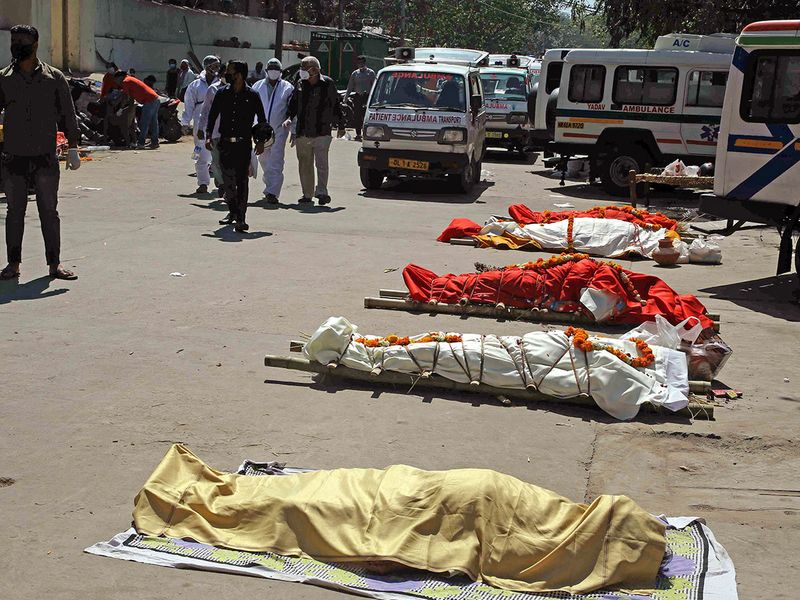
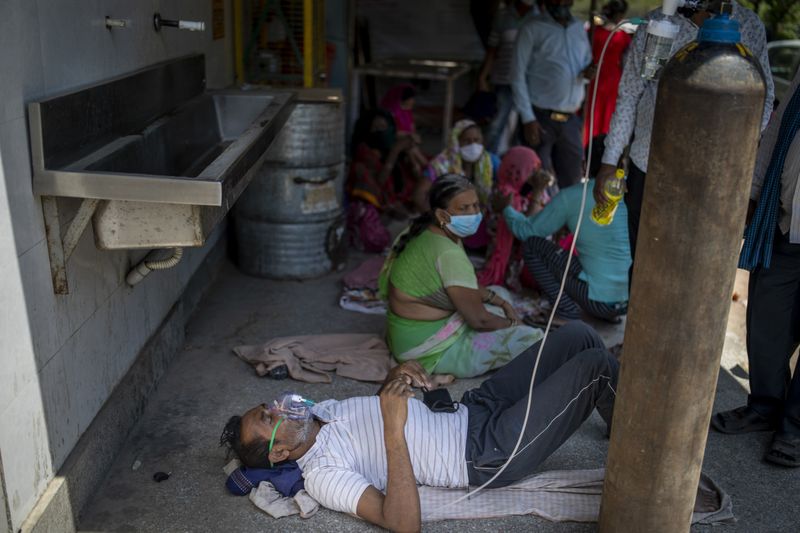
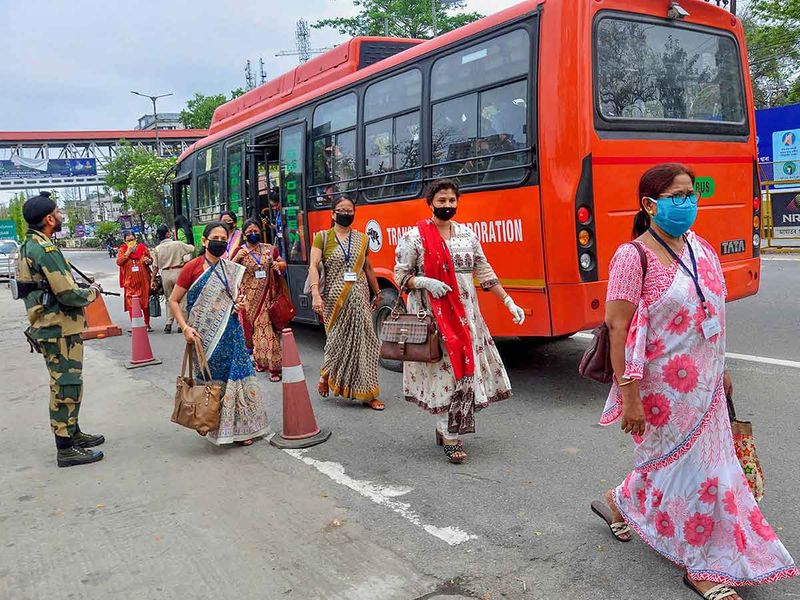
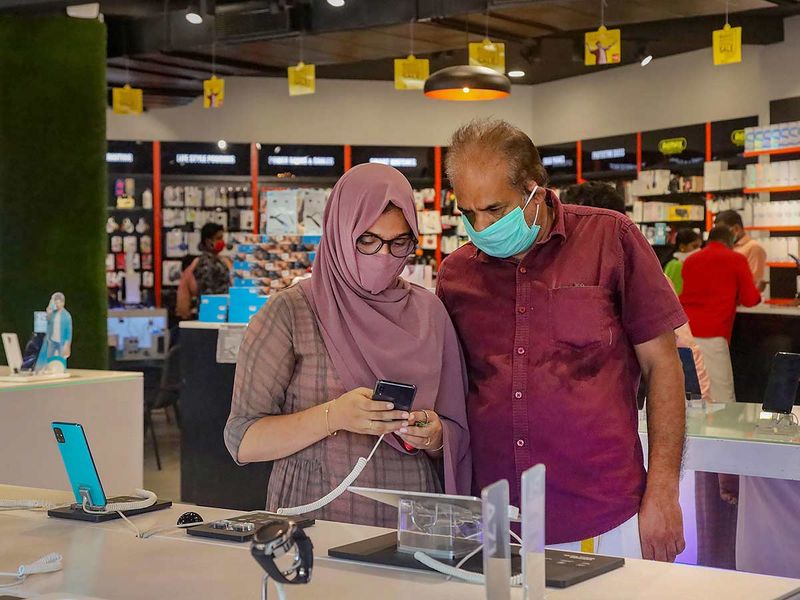
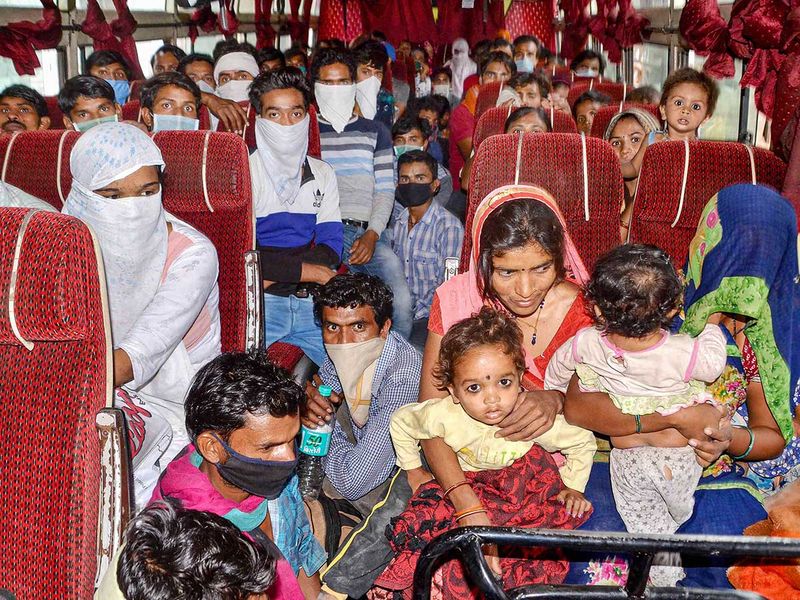
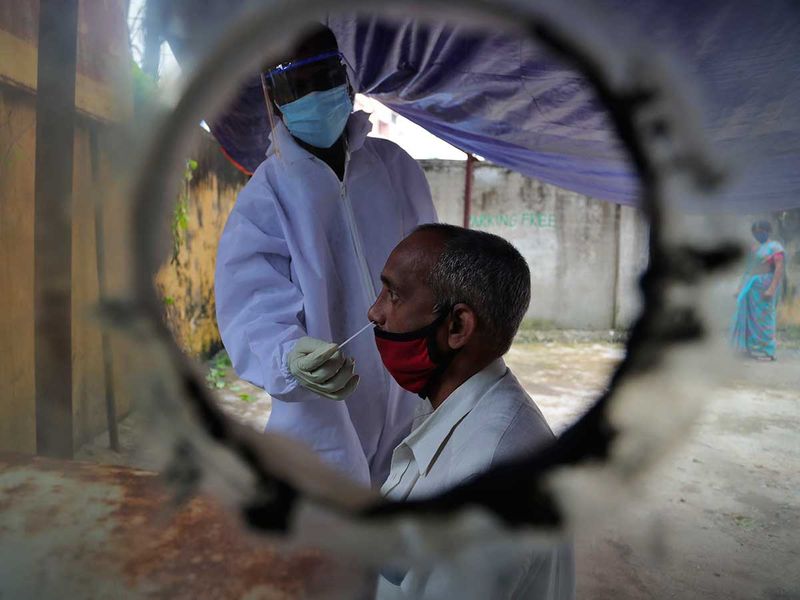
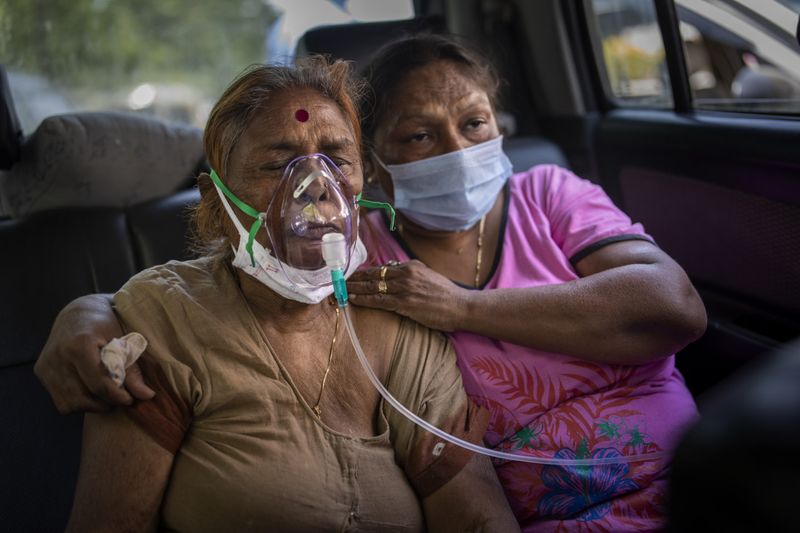

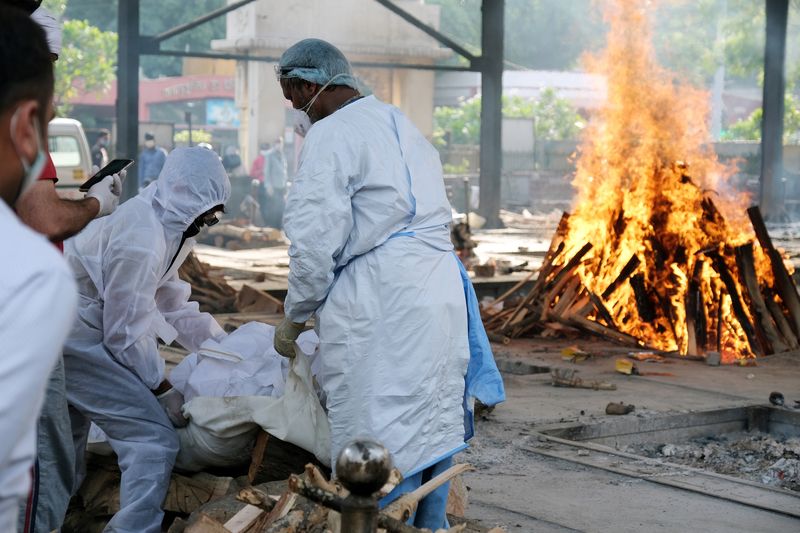
Q: What’s going on?
India is in the midst of a “COVID storm”. It has registered over 17 million cases as of April 25, 2021 (Sunday), overtaking Brazil in having the highest COVID numbers.
Only in the last four days, the subcontinent recorded more than 1 million infections — with 346,786 new cases clocked in overnight into Saturday (April 24, 2020). On Sunday (April 25) 349,691 new cases were recorded, the fourth consecutive day of spike, with 2,767 people dead.
Hospitals are running short of life-saving oxygen and patients are dying while they wait to see doctors. India has driven up global cases to higher highs, breaking previous records. NatGeo describes India’s new wave as the “worst surge in the world”. Many magacities, including Delhi, have been locked down. Now, several nations have imposed India flight bans as the virus has hit the affluent class and threatens to derail the subcontinent's economic recovery.
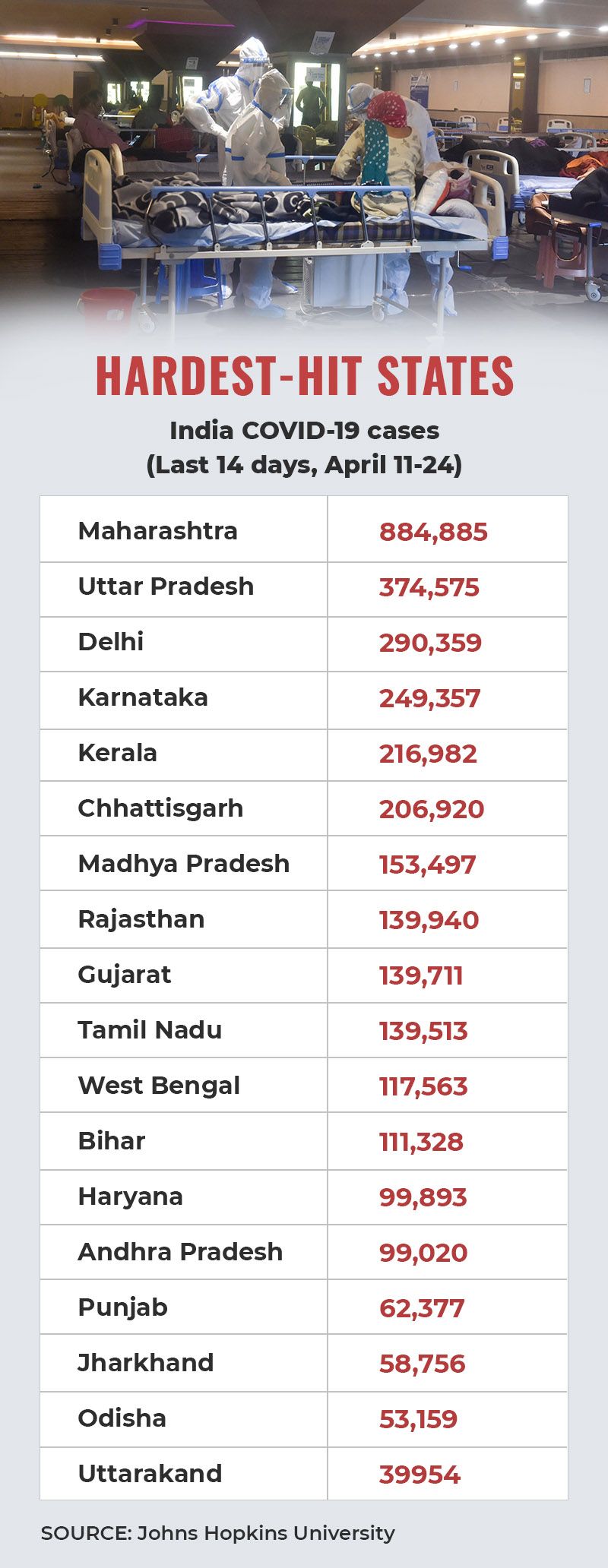
Q: How many COVID variants are dominant in India?
Scientists remain confounded. India, which until recently was one of the world’s top vaccine producers, has seen a grim surge in three major variants of SARS-CoV-2, the virus that causes COVID-19.
Close genome surveillance of the coronavirus revealed 3 variants — B.1.617, B1.1.7. and B. 1.351 — gaining ground in the viral battle for dominance in the subcontinent.
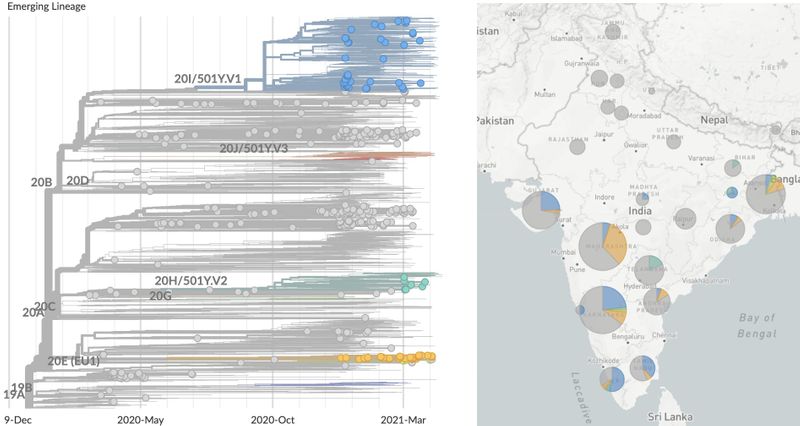
349,691
new COVID-19 cases reported in India on Sunday (April 25, 2021), a record increase for the fourth consecutive dayQ: What’s the so-called “double-mutant” coronavirus?
Phylogeneticists call it as “lineage B.1.617”, also known as VUI (Variant Under Investigation)-21APR-01. It is one of the known variants of SARS-CoV-2 first identified in India on October 5, 2020. It is also known as a "double mutation" variant, referring to B.1.617's mutations in the SARS-CoV-2 spike protein's coding sequence at E484Q and L452R.
Researcher Dr Trevor Bedford, who specialises in phylodynamic analysis of pathogen sequence data, says that “it appears” that B.1.617 was at a higher starting point in January in India. By the end of March, the B.1.617 also has the "highest frequency” in the subcontinent at around 45%.
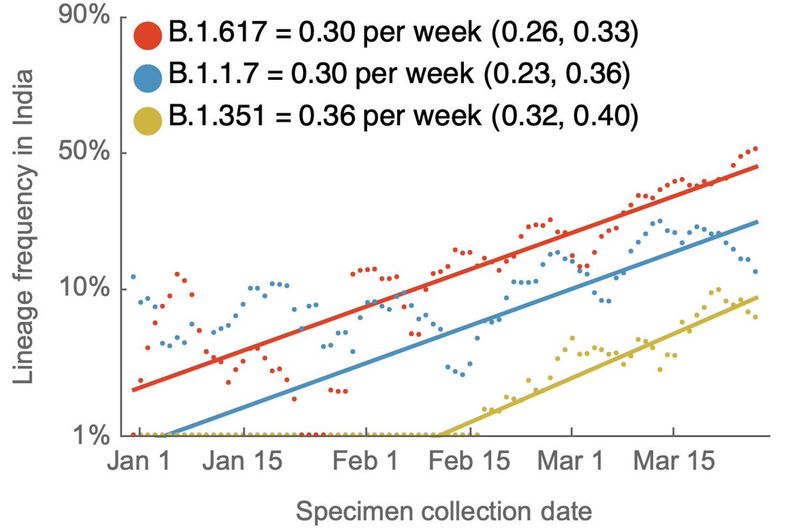
Q: What’s the reason for the resurgence in infections in India?
Experts point to two key reasons:
(1) Complacency:
People skirting containment measures, blithe disregard for masks and social distancing mandates, alongside huge religious festivals and elections allowed to take place — with few precautions.
(2) Vaccine shortage:
With supplies dominated by richer nations, and limited raw materials, new vaccines cannot be produced fast enough for its 1.3 billion people. The head of Serum Institue of India, one of the world's biggest vaccine makers has appealed to US President Joe Biden to lift an export ban on making raw materials. After initially rejecting the appeal, the White House has made U-turn and vowed to immediately provide the badly-needed raw materials for vaccine manufacture.
17 m
Number of COVID cases recorded in India, the second-highest globally.Q: Is there really a dominant strain in India, or a "third mutation”?
There are three coronavirus “lineages” scientists are closely tracking in India, based on specimen collected from patients. A “double mutant” virus was first reported in March, before the so-called “third mutation” was also found. Currently, it appears the known variants are competing with each other for domination.
192,311
Official COVID-19 death toll in India as of Sunday, April 25, 2021.“It's hard for me to infer the degree to which new variants are driving the surge in cases in India,” stated researcher Trevor Bedford in a tweet. Dr. Bedford, who works at the Fred Hutchinson Cancer Research Center in Seattle, has been analysing genomic sequences from four seasonal coronaviruses that have been known for years.
It's almost like a race between man versus virus, in a survival-of-the-fittest kind of equation. Scientists say men and coronaviruses, their "fittest" progeny, that is, are likely to co-exist going forwarcd.
Q: What do we know about the mutations of B.1.617 lineage? Why is it called the “Indian variant”?
GISAID, the global scientific database, first detected the B.1.617 genome to October 5, 2020. As of April 19 2021, B.1.617 has been identified from genome data submitted by 21 countries, according to Prof Sharon Peacock, Director of COG-UK, and Professor of Public Health and Microbiology, University of Cambridge.
In terms of frequency, India has submitted the most B.1.617 genomes, followed by the UK and the US. Based on available genome information, B.1.617 was first detected in the UK on February 22, 2021, and in the US on February 23, 2021.
Q: Why is it misleading to call it an “Indian variant”?
Scientists explain that describing a virus based on geographical location misses the point, as the relative frequency of genomes from different countries is inherently “biased”. The reason is that different countries perform different amounts of viral genome sequencing. A country sequencing a high number of genomes may be more likely to detect variants.
Q: How many mutations does the lineage B.1.617 have?
According to Science Direct, the B.1.617 genome has at least 13 mutations (other journals identified up to 15 mutations in B.1.617), with two specific mutations in the spike protein alone:
E484Q:
The mutation at position 484, a glutamic acid-to-glutamine substitution, confers the variant stronger binding potential to the human ACE2 receptor), as well as better ability to evade hosts' immune systems, in comparison to other variants. Meaning: It is relatively more infectious.
L452R:
The mutation at position 452, a leucine-to-arginine substitution, confers stronger affinity of the spike protein for the ACE2 receptor and decreased recognition capability of the immune system.
Each of these two mutations, however, is not unique to this variant, but the occurrence of both of them in the same variant is unique to it. There is also a third defining mutation: P681R. This is a mutation at position 681, a proline-to-arginine substitution. According to Harvard Medical School’sProf. William A. Haseltine, this may boost cell-level infectivity of the variant “by facilitating cleavage of the S precursor protein to the active S1/S2 configuration”. In other words, those combined mutations make this variant more infectious.
Q: What makes it a “variant of concern”?
At least three thresholds must be met to determine whether a particular mutation (or series of mutations) leads to something meaningful or is “worrisome”, Dr. Eric Topol, a leading virologist, Executive Vice President of of Scripps Research and Editor-in-Chief of Medscape.
(1) Infectiousness: greater ability to infect people;
(2) Virulence: More hospitalisations, severe cases and deaths;
(3) Immune-evasion: Reinfects previously COVID-infected, or renders vaccines less effective).
“All variants are innocent, until proven guilty,” said Dr Topol. “So far, we really don’t have a variant, or strain, that has all three, which is good. We doubt it would be the ‘monster’. We have one that’s the most troublesome, which is the UK variant, because it has both the issue of transmission or infectiousness by 50% or so, and it also causes more severe or fatal illness. That’s what we have to be worried about.”
Q: How many SARS-CoV-2 variants had been found?
There are literally thousands of variants of the virus. Most of them are insignificant. As of March 8, 2021, there had been at least 5,935 variants of the coronavirus found, based on GISAID online science database. Most are not considered “variants of concern”.
5,935
number of variants of the coronavirus found as of March 8, 2021 (as per GISAID)Q: Why are too many variants emerging?
The reason so many variants are emerging around the world, is because there have been so many cases, explained virologist Dr Jeremy Kamil. “They are each like buying a lottery ticket for the virus — except the prize isn’t money. It’s that the virus gets to learn a new trick.”
Many countries haven’t done a good job controlling the pandemic. A number of big-name leaders seemed to willfully to ‘let it rip’. What a mistake…because that is a lot of lottery tickets.”
Q: Do vaccines work against these variants?
Most vaccines, especially mRNA ones, show they’re also effective against new variants. Pretty much all of the vaccines in use can save your life from dying of COVID-19, even if you get infected by a variant. “The best vaccine is the one you’re offered first,” said Dr Kamil. “This is because it takes about 14-days for your body to build up a repertoire of “memory — or adaptive immune cells specific for a certain virus or other pathogen.”
The sooner you help it get to work, the sooner you don’t need a doctor injecting you with recombinant antibodies — because you can make your own.
Also, even if your immune response is a little “mismatched” because the vaccine’s version of the Spike doesn’t 100% match the ones in circulating variants of concern, your immune system is dynamic. (It means) it can quickly update itself to more effectively fight the new variants.
Q: How long will this new “wave” last?
It is anyone’s guess at this point. What’s clear, though, is that given the current numbers, the virus is spreading faster than ever before. Viruses mutate all the time. Scientists now agree that as a pathogen (or disease-causing agent), SARS-CoV-2 is unlikely to be go away any time soon. Variants will appear until the virus “settles down” — like the common cold. Or much like influenza, the virus could retain its ability to cause severe disease in some segments of the population.
The good news is that the scientific community's ability to quickly detect variants — and make sense of them to guide public health policies — has improved significantly, thanks to open science. The objective now is to identify them early enough so that they can be addressed by effective vaccines. Given the vaccine production shortfalls, and the uncertainty over vaccine raw materials, one thing that remains clear: the virus is spreading faster than ever before.
from World,Europe,Asia,India,Pakistan,Philipines,Oceania,Americas,Africa Feed https://ift.tt/32OQRkK
No comments:
Post a Comment